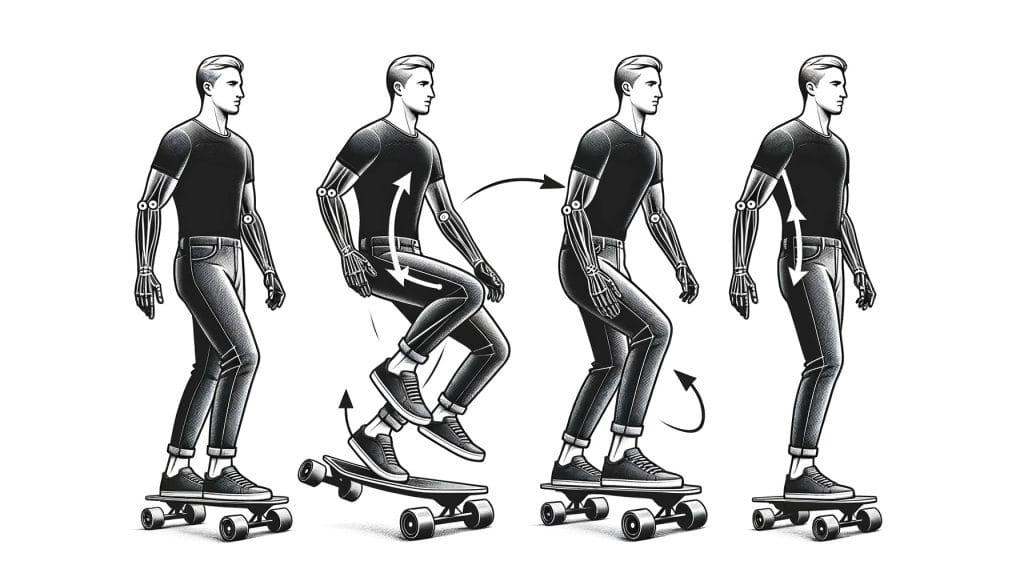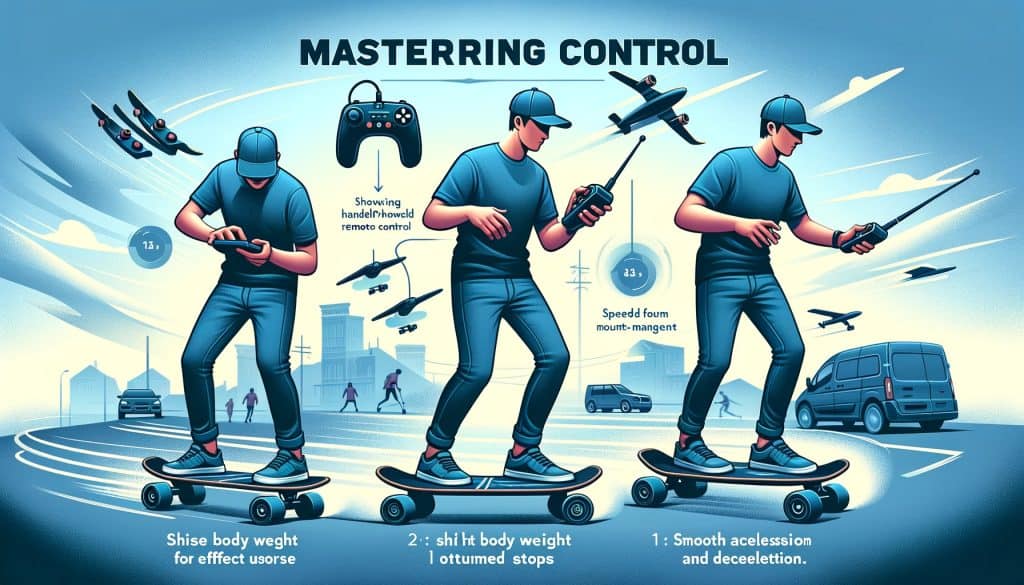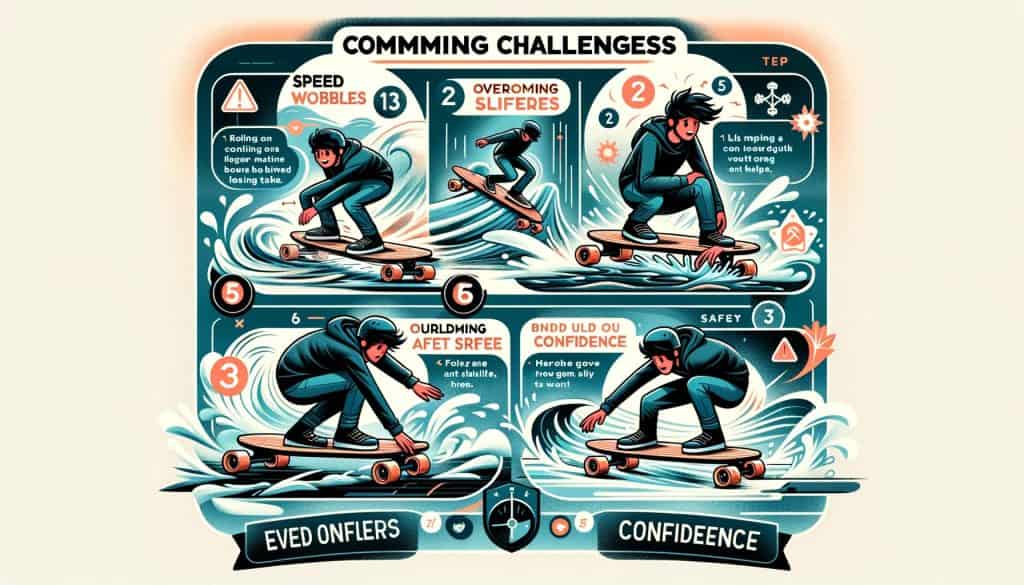The world of personal transportation is continuously evolving, and electric longboarding stands at the forefront of this exciting evolution. Blending cutting-edge technology with the t ill of sport and the practicality of urban transport, electric longboards have emerged not just as a novelty, but as a legitimate and increasingly popular mode of travel in cities and suburbs alike.
The Essence of Electric Longboarding
Electric longboards are more than just skateboards with motors. They are the embodiment of modern transportation technology, integrating efficient electric motors, advanced battery technology, and innovative control systems into a package that’s both exhilarating and practical.
- Technology: At their core, electric longboards are marvels of engineering. They harness electric power to provide a clean, efficient, and silent mode of transportation. With batteries and motors becoming more advanced, these boards are capable of longer ranges and higher speeds than ever before.
- Sport: There’s an undeniable sporting aspect to electric longboarding. It requires skill, balance, and a bit of daring. Whether carving t ough city streets or cruising along park pathways, riding an electric longboard is an exhilarating experience that combines the freedom of skateboarding with the rush of surfing or snowboarding.
- Transportation: Beyond sport and technology, electric longboards serve a very practical purpose. In the urban jungle, where traffic congestion is a daily hassle, these boards offer a nimble alternative to traditional transportation methods. They’re perfect for short commutes, running errands, or simply enjoying a more leisurely and scenic route to your destination.
The Role of Balance and Control
Balance and control are the linchpins of the electric longboarding experience. They transform what could be a mundane commute into an engaging, dynamic activity. Mastering balance on an electric longboard isn’t just about staying upright; it’s about harnessing the board’s potential, maneuvering gracefully, and responding intuitively to the environment around you.
- Physical Balance: This involves maintaining your center of gravity while the board moves beneath you. It’s a skill that improves with practice, engaging core muscles and improving overall fitness.
- Control Mastery: Effective control of the longboard is crucial for safety and enjoyment. This includes understanding the nuances of the board’s acceleration, braking, and steering mechanisms, and learning how to respond to different road conditions and obstacles.
- Mental Focus: Electric longboarding also requires mental balance. It demands focus, anticipation, and the ability to make quick decisions. This mental engagement is part of what makes electric longboarding so appealing and rewarding.
Understanding Your Electric Longboard
Electric longboarding is not just about stepping on a board and zipping t ough the streets; it’s about understanding the intricacies of the machine beneath your feet. Let’s break down the anatomy of an electric longboard and see how each part contributes to the overall balance and control.

- Deck:
- Structure: The deck is the flat surface you stand on. Made from materials like wood, bamboo, or carbon fiber, it provides the base for your longboarding experience.
- Impact on Balance and Control: A sturdier deck means more stability, while a flexible deck offers better maneuverability. The length and width of the deck also play a crucial role in determining how easy it is to balance.
- Wheels:
- Composition: Wheels are usually made of polyurethane and come in various sizes and hardness levels.
- Impact on Balance and Control: Larger, softer wheels handle bumps and cracks better, offering a smoother ride. Smaller, harder wheels offer more stability at higher speeds but can be less forgiving on rough surfaces.
- Motor:
- Function: The motor is the heart of an electric longboard, providing the power needed to propel you forward.
- Impact on Balance and Control: The placement and type of motor (hub motor vs. belt drive) affect the board’s responsiveness. A well-tuned motor provides smooth acceleration and braking, essential for maintaining control.
- Battery:
- Function: The battery stores the electrical energy that powers the motor.
- Impact on Balance and Control: The battery’s weight and placement affect the board’s center of gravity. A lower center of gravity can make the board more stable, while a higher one can make it more agile.
Understanding these components is key to mastering your electric longboard. Each part plays a crucial role in how the board handles and responds to your movements. By knowing your board inside and out, you can enhance your riding experience, ensuring not only a smoother ride but also your safety on the go.
< class="wp-block-separator has-alpha-channel-opacity"/>The Basics of Balancing on an Electric Longboard
Mastering balance on an electric longboard is not just about standing up without falling; it’s an art that involves understanding your body and the board. Let’s dive into the basics.

Starting with the Right Stance
- Foot Placement:
- Front Foot: Place your front foot near the front trucks of the board, angled slightly towards the front. This position offers stability and control.
- Back Foot: Your back foot should be near the rear trucks, parallel or slightly angled. This foot acts as a pivot for turns and maneuvers.
- Body Posture:
- Knees: Keep your knees slightly bent. This acts as a natural shock absorber and gives you flexibility to adjust your balance.
- Upper Body: Lean forward slightly when accelerating and lean back when slowing down or stopping. Your upper body plays a crucial role in maintaining balance during movement.
Moving from Static to Dynamic Balance
- Static Balance:
- Start by simply standing on your stationary longboard. Get comfortable with your stance and feel the board beneath your feet.
- Practice shifting your weight from side to side and front to back. This helps in understanding how the board reacts to your movements.
- Dynamic Balance:
- Begin with a gentle push to set the board in motion. Focus on maintaining your balance as the board starts moving.
- As you gain confidence, gradually increase your speed. The key is to make small, controlled adjustments to your posture and weight distribution.
Importance of Core Strength and Flexibility
- Core Strength:
- A strong core is essential for effective balance. It helps in maintaining your posture and stabilizing your body during the ride.
- Engage your core muscles while riding. This not only improves balance but also reduces the strain on your legs.
- Flexibility:
- Flexibility aids in smoother transitions and sharper turns.
- Regular stretching can improve your flexibility, making it easier to adjust your posture and balance quickly.
Balancing on an electric longboard is a dynamic process that improves with practice. By starting with the right stance and understanding the transition from static to dynamic balance, you can enhance your control over the board.
Remember, a strong core and flexibility are your allies in this journey. Keep practicing, and soon, balancing on your electric longboard will feel as natural as walking.
< class="wp-block-separator has-alpha-channel-opacity"/>Mastering Control – The Rider’s Toolkit
Gaining mastery over your electric longboard involves more than just balance; it’s about understanding and effectively utilizing the tools at your disposal. Let’s dive into the key aspects of mastering control on an electric longboard.

Handheld Remote Controls
- Understanding the Remote:
- Most electric longboards come with a handheld remote control, which typically features acceleration and braking controls, and sometimes a screen displaying speed and battery life.
- Familiarize yourself with the feel and functions of the remote. Knowing which button does what, without looking, is crucial.
- Tips for Effective Use:
- Grip: Hold the remote firmly but not too tightly. A relaxed grip allows for smoother control.
- Thumb Control: Use your thumb to gently push the t ottle or brake. Avoid jerky movements.
- Practice: Spend time practicing with the remote in a safe area. Get comfortable with varying speeds and braking intensity.
Body Weight and Directional Control
- Weight Shifting:
- To turn, lean in the direction you want to go. Shifting your weight towards the toes turns the board right (for regular footed riders) and vice versa.
- Practice makes perfect. Start with gentle leans and gradually increase the angle as you become more confident.
- Stopping:
- For stopping, shift your weight slightly backwards. Combine this with gentle braking on the remote for a smooth stop.
Speed Management
- Accelerating:
- Start with gentle pressure on the t ottle. Let the board gradually pick up speed.
- Keep your body relaxed but ready to adjust as the speed increases.
- Decelerating:
- Release the t ottle slowly. Avoid abrupt braking unless it’s an emergency.
- As you slow down, adjust your stance for stability.
Mastering control of your electric longboard is a journey that involves understanding and effectively using the tools at your disposal, such as the handheld remote, and honing your skills in weight shifting and speed management.
With practice and patience, you’ll find that controlling your electric longboard becomes second nature, allowing for a more enjoyable and safe riding experience.
< class="wp-block-separator has-alpha-channel-opacity"/>Advanced Longboard Balancing Techniques
As you grow more comfortable with your electric longboard, it’s time to level up your skills with some advanced balancing techniques. These will not only make your rides more enjoyable but also safer, especially in challenging situations.

Navigating Different Terrains
- Uphill Riding:
- Lean forward slightly to maintain balance against the incline.
- Use gentle, steady t ottle to keep a consistent speed.
- Downhill Riding:
- Shift your weight slightly backward to counter the downhill force.
- Use the remote control to manage speed and avoid going too fast.
- Uneven Surfaces:
- Keep your knees bent and ready to absorb shocks.
- Stay alert and ready to adjust your balance quickly to compensate for bumps and dips.
Making Sharp Turns and Quick Stops
- Sharp Turns:
- Practice leaning into the turn while maintaining your balance.
- Start with wider turns and gradually work towards sharper ones as you gain confidence.
- Quick Stops:
- Master the art of quick, controlled braking.
- Anticipate stops and start decelerating in advance to avoid abrupt halts.
Practice Drills for Enhancing Balance and Control
- Slalom Drills:
- Set up a course with cones or markers and practice weaving in and out. This improves your agility and precision in turning.
- Speed Control Drills:
- Practice accelerating to a certain speed and then maintaining it. This helps in developing a good sense of speed management.
- Stopping Drills:
- Regularly practice stopping from various speeds. This will help you become more adept at controlling the board under different conditions.
Advanced balancing techniques are crucial for any electric longboard rider looking to take their skills to the next level. By mastering these skills, you ensure not only a more exhilarating riding experience but also a safer one, as you become adept at handling a variety of situations and challenges. Remember, practice is key, so keep riding and keep improving!
< class="wp-block-separator has-alpha-channel-opacity"/>Safety First – Protective Gear and Precautions
Riding an electric longboard is a t illing experience, but safety should always be your top priority. Let’s explore the essential safety gear you need and the precautions you should take to ensure a safe and enjoyable ride.

Essential Safety Gear
- Helmet:
- A well-fitted helmet is non-negotiable. It’s your best defense against head injuries.
- Ensure it meets safety standards and fits snugly.
- Knee and Elbow Pads:
- These protect your knees and elbows from scrapes and impacts.
- Look for pads that offer good mobility without sacrificing protection.
- Gloves:
- Gloves protect your hands and improve grip on the remote.
- Consider gloves with wrist protection for additional safety.
Pre-Ride Checks
- Board Inspection:
- Check the condition of the wheels, bearings, and trucks for any wear or damage.
- Ensure the battery is charged and the motor is functioning properly.
- Remote Control Check:
- Test the remote control to ensure it is responding correctly.
- Make sure the connection between the remote and the board is stable.
Riding Etiquette and Awareness of Surroundings
- Riding Etiquette:
- Respect pedestrians, other riders, and vehicles. Give way where necessary.
- Abide by local laws and regulations regarding electric longboarding.
- Awareness of Surroundings:
- Stay alert to your environment. Be aware of obstacles, road conditions, and traffic.
- Keep a safe distance from other people and objects.
Adhering to these safety measures not only protects you but also ensures a positive experience for everyone around you. Remember, no ride is too short for skipping safety gear and precautions. Safety first, fun always!
< class="wp-block-separator has-alpha-channel-opacity"/>Common Challenges and Solutions
Riding an electric longboard comes with its set of challenges. Understanding these challenges and knowing how to handle them can significantly enhance your riding experience. Let’s explore some common issues and their solutions.

Dealing with Speed Wobbles
- Causes:
- Speed wobbles typically occur at higher speeds and are caused by a loss of stability, often due to improper weight distribution or loose trucks.
- Nervousness or overcorrection can also exacerbate the problem.
- Solutions:
- Stance Adjustment: Keep your weight centered over the board with a slightly forward lean.
- Relax: Stay calm and avoid stiffening up, as tension can make wobbles worse.
- Truck Tightening: Adjust the tightness of your trucks to find a balance between stability and maneuverability.
Riding in Various Weather Conditions
- Wet or Slippery Surfaces:
- These conditions require extra caution due to reduced traction and control.
- Safety Tips:
- Reduced Speed: Slow down to maintain control.
- Avoid Puddles: Water can damage the electrical components of your longboard.
- Appropriate Tires: Use wheels suitable for wet conditions if you frequently ride in the rain.
Overcoming Fear and Building Confidence
- Gradual Progression:
- Start with short, easy rides and gradually increase the difficulty as your comfort level improves.
- Practice in safe, controlled environments before taking on busier areas or challenging terrains.
- Mental Preparation:
- Visualize your rides and go t ough the motions mentally.
- Recognize that fear is normal and can be a helpful alert to potential dangers.
- Practice and Patience:
- Regular practice is the key to building confidence.
- Be patient with yourself and celebrate small victories along the way.
Facing and overcoming these common challenges is a crucial part of your journey as an electric longboarder. By understanding the causes and implementing these solutions, you can enjoy a safer and more confident riding experience. Remember, every rider faces these hurdles, but with practice and perseverance, you can master your electric longboard.
< class="wp-block-separator has-alpha-channel-opacity"/>Conclusion
As we wrap up our exploration into the world of electric longboarding, let’s revisit the key points we’ve covered and reflect on the journey ahead.

Recap of Key Points
- Understanding Your Board: Knowing the anatomy of your electric longboard – deck, wheels, motor, and battery – and how each part affects your ride is fundamental.
- Basics of Balancing: Mastering the right stance and transitioning from static to dynamic balance, along with the importance of core strength and flexibility.
- Mastering Control: Utilizing handheld remote controls effectively, understanding body weight and directional control, and managing speed smoothly.
- Advanced Techniques: Navigating various terrains, making sharp turns and quick stops, and practicing drills to enhance balance and control.
- Safety Measures: Emphasizing the importance of wearing essential safety gear, performing pre-ride checks, and maintaining awareness of your surroundings.
- Overcoming Challenges: Dealing with speed wobbles, riding in different weather conditions, and building confidence.
Electric longboarding, like any skill, improves with practice. Each ride brings new insights and experiences. Stay curious, keep learning, and don’t be afraid to push your boundaries within safe limits. Remember, every expert was once a beginner.
Final Thoughts on the Joy and Freedom of Electric Longboarding
Electric longboarding is more than just a mode of transportation; it’s a gateway to freedom and joy. It’s about feeling the wind in your hair as you glide t ough the streets, the exhilaration of mastering a new maneuver, and the sense of community with fellow riders. This journey is about embracing innovation, enjoying the outdoors, and experiencing the t ill of movement in a whole new way.
As you continue your journey in the world of electric longboarding, remember to enjoy every moment, stay safe, and above all, have fun. The road is yours to explore!


